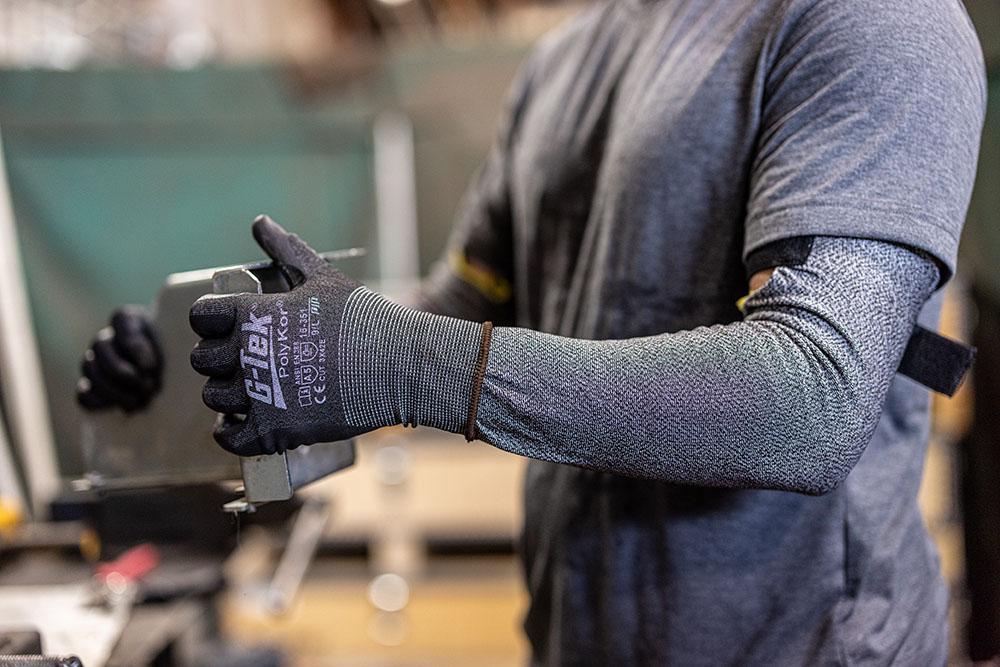It sounds like a paradox: designing a safety glove that’s thinner than older models but provides the same protection from cuts.
PIP achieved the two seemingly conflicting goals, however, with its portfolio of 21-gauge gloves. The safety gear relies on new technology that allows manufacturers to produce gloves with 21 stitches per square inch, the highest gauge level on the market today.
Work glove thicknesses, or gauges, previously ranged from thick 7-gauge construction to 10-gauge, 13-gauge, 15-gauge and 18-gauge, which dominated the market for lighter-weight gloves in recent years, says Jeffrey Cohen, director of product management at PIP.
Increasing the number of stitches per square inch decreases the thickness of yarn or fibers required, resulting in a thinner glove that allows wearers more flexibility, breathability and tactile sensitivity.
Both are crucial for manufacturing workers and machinists shaping sometimes intricate workpieces with increasingly costly metal alloys. When they can’t feel their workpieces through thick safety gloves, they may take them off, increasing the risk of injury from sharp tools and equipment.
“When you’re doing certain jobs that require cut protection, you also really need to feel what’s going on,” Cohen explains. “If you’re dealing with small, little sharp parts, you’re worried about being able to pick up particular items or adjust little tools, which requires good tactile sensitivity, but you’re also worried about getting cut by slivers of metal or, perhaps, slitting burrs on coils of steel. It’s all about giving the customer a better cut protection with great grip, peak dexterity and tactile sensitivity.”






Talk to Us!
Leave a reply
Your email address will not be published. Required fields are marked *